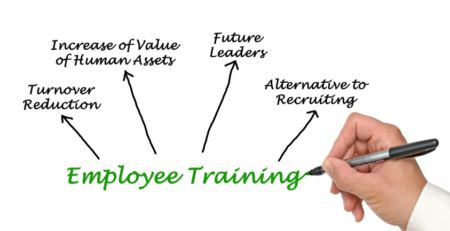6 Most Common Employee Training Challenges for New Systems
Introduction
In this article we consider some of the most commonly recognised training issues for users when onboarding with new systems. We also look at some of the strategies and systems available to help organisations with strengthening their employee training through the use of a digital adoption solution and related strategies.
Traditional Employee Training
Here are some of the less colourful adjectives and phrases that some employees use to describe traditional training methods for new business applications:
- “Boring”
- “Futile”
- “Tedious”
- “Ineffective”
- “OTT and largely irrelevant at the same time”
We all agree on the need for training, but Business Applications training can be particularly troublesome. While the following inevitable shortcomings have been addressed in part by some sophisticated Learning Management Systems, there’s no doubt that user training is generally considered difficult to get right, but there are substantial rewards for doing so; 94% of employees say they would stay at a company longer if it invested in their learning and development. (LinkedIn)
Common Employee Training Issues with New Applications
- An inflexible curriculum-based approach meaning that users are required to “learn” many aspects of the applications that they’ll never use or access.
- Large volumes of essential content need to be consumed before using the system and courses are delivered in a short time period.
- All focus on the standard application with little consideration of underlying business processes.
- Application customisations and setups either aren’t covered by training courses or, they’re often delivered in an inconsistent way.
- Different individuals learn in different ways, some really struggle with the default “presentation without interaction” style of many courses.
- Different employees have differing levels of existing knowledge and thus understand the learning content quicker. The one size fits all approach of many LMS’s doesn’t handle this particularly well.
What are the Results of these Traditional Training Methods and their Deficiencies?
- Employees believe precious time and energy is wasted on traditional applications training and they have little to show for their investment. This is largely due to natural inability to retain large volumes of information required to understand and correctly use sophisticated business solutions.
- Most employees are required to undertake training as an additional project on top of their regular duties and so their regular jobs are impacted or employees undertake training in their own time.
- Some employees are overwhelmed by aspects of traditional training, for example the volume of information, understanding something that is entirely new and the need to pass exams can increase stress and sap morale.
Is there a Better way to Deliver Effective New Applications Training?
Training for New Business Applications shouldn’t only be viewed in the context of learning how to use the “target” application. Learning and Development is a wider topic and if considered in a homogeneous way, the applications should also be delivered in a way that is more sympathetic to on-boarding new users. One of the answers is to adopt a “hybrid” approach.
The hybrid model shouldn’t entirely replace traditional training, as the basic overview and context, as well as specific key capabilities and rules for the new application need to be covered off formally, before the new users engage.
A hybrid model supplements this reduced upfront training in three areas:
- In application training – this is training content that is accessible from the application itself. These systems are configured to deliver the content directly to the user while they’re engaged with the application. The content can be delivered in a format that works best: as plain or rich text, as a link to video or as PDF documentation that can be downloaded and reviewed in greater detail. Additionally, the training system logs that the content has been viewed which is great from an on-boarding check-list approach.
- In application help – this differs from training as they’re delivered as shorter help, hints or standard operating procedures right at the point where the employee needs it. Crucially, these help facilities are configured by the End Customer and so can reference policies and processes that are unique to the organisation.
- Application Guidance – sometimes, it’s simply best to adopt a “guard rails” approach for new users of an application. In practice this would block off or redact entire sections of the application until the employee is ready to progress to those areas.
This video helps to explain how a Digital Adoption Platform can assist in these areas.
Reducing Complexity
There are other ways of reducing the level of training and accelerate the user adoption of new systems. Complexity can be reduced by the introduction of “monitoring” and / or “smarts” into the deployed application.
Monitoring can be used in UAT and through to production to gather metrics on how the application is used. For example, measuring the session times to perform specific tasks and processes with the application (aka application paths or journeys) will provide invaluable insight into the level of training, help and guidance that users will require. This can be considered as a benchmarking exercise that provide the baseline against which for improvements can be measured.
Secondly, the use of smarts such as workflows, field verification, auto-populating fields and automation can reduce the level of complexity and thus, the overall requirement for training.
If any of these challenges resonate with you, please contact us to discuss how our non-invasive solutions for on-boarding employees to new applications can accelerate user application adoption.











